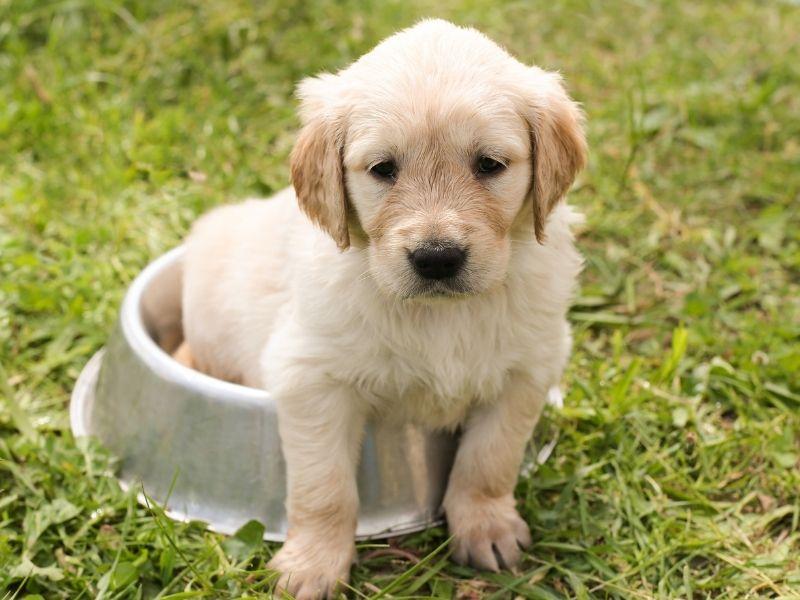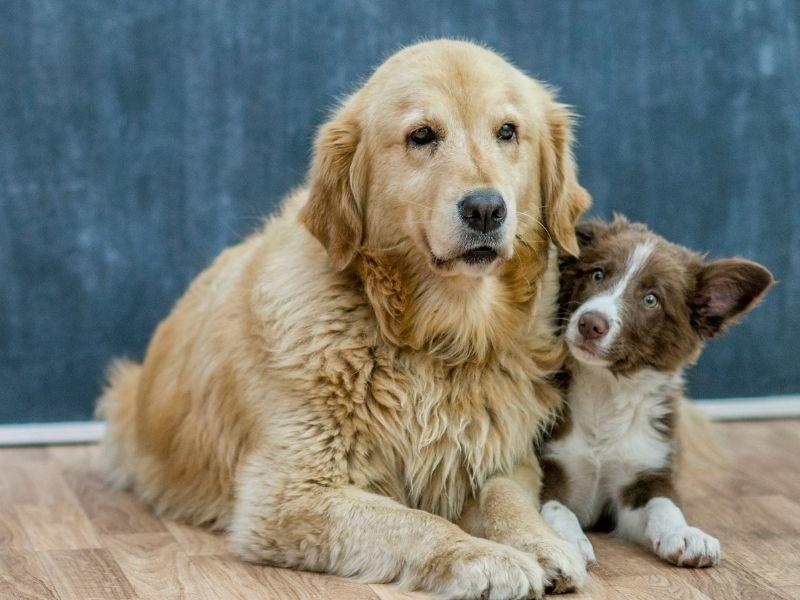Introducing a new puppy to your adult dog may seem like a daunting task, but it doesn’t have to be. There are many reasons why you would like to introduce a new puppy to your adult dog. Maybe you are getting another dog because one of your old ones recently passed away, or maybe you just got a new addition to the family, but whatever is the case for you, it’s important that they get along so everyone can live happily together. The key isn’t what you do with the dogs when they first meet, but what you do before they meet. If you have a plan that you follow, then this could be as easy as feeding the dogs from either side of the door or putting them in separate rooms and letting them smell each other’s scents to establish a bond with one another.
How Do You Introduce a New Puppy to Your Adult Dog?
When you first bring the new puppy home, it’s best to keep them separated. If they are in close proximity to each other before they have even smelled each other, there is a chance that one dog could attack the other without warning because of their heightened state of excitement. Here are some tips on how to introduce a new puppy to your adult dog:
When the new puppy comes home, put them in a room on their own and leave them there for an hour. This gives the new pup time to relax after the long trip from the shelter or breeder and it also gives your older dog time to get used to sensing the new dog without having the new one around it.
Start feeding the dogs from separate bowls (with the door closed) and let them get used to each other’s scents through their nose. Feed your older dog first, take away his bowl and then serve the new pup’s with theirs so they don’t have access to each other’s food at any point in time.
When you are ready to let them meet, make sure you have some yummy treats for them both. Make sure your older dog is on a leash and the new pup is held securely. Walk slowly towards each other until they are close enough to get a good sniff of each other’s faces. If either one of them growls or shows any signs of aggression, you need to put a halt to the meeting and keep them separate. Continue with this process for as long as it takes until there is no sign of aggression from either dog.
When they can be around each other without any growling or aggressive behavior, try letting them meet outside the house, rather than in an enclosed space where they could feel trapped.

How Do I Get My Older Dog to Accept a New Puppy?
Getting your older dog to accept the new pup can be quite an arduous task. Your older dog may think you are trying to replace him and could act out with aggression, but there are ways to introduce them in which he will make the transition easier for himself. Here are some tips on how to get your older dog to accept a new puppy:
Even though it might seem like a good idea, the new pup should not sleep in your older dog’s bed. This takes away their comfort and security which they have grown accustomed to over their lifetime. Instead, you could make them a “buddy bed” or buy a small crate for the pup to sleep in. Once they get used to it, you can slowly move the crate closer and closer to where your older dog sleeps.
Give them lots of praise when they do something right! If your older dog is showing some signs of aggression towards the new pup, then reward him with a treat or a belly rub and lots of love when he is being good. This will reinforce that being nice is the right thing to do and you should be praised for it.
When they are playing or roughhousing, make sure you tell them to stop if they are being inappropriate or overly aggressive. You need to show your older dog that you are in control of the situation and that he needs to listen to you.
Always make sure they have plenty of toys around and keep them busy with things like playdates where they only interact with other dogs and not humans. This way, your older dog can really focus on bonding with the new puppy without having distractions from other humans or animals around.
See also: Spotlight on Small Short-Haired Dogs
And: For the Quiet Home, Little Dogs That Don’t Bark
How Long Does It Take for an Older Dog to Get Used to a New Puppy?
When bringing home a new puppy, there is no time limit as to how long it will take your older dog to adapt. You need to be patient and respect the fact that they’ve always had you all to themselves so learning how to share can be difficult, especially if they are not shown how to properly interact. There are no set rules as to when they will open up and learn how to play with each other, but you can speed up the time by taking it slowly and don’t force them together. If your older dog is acting out with aggression or fear towards the pup, then you need to take a step back and let them get used to each other from a distance.
Should Second Dog’s Be Same Gender?
While it might seem like a good idea to get two of the same gender so they can keep each other company and not feel alone, this is not always the best option. Dogs are pack animals by nature and will fight amongst themselves for dominance if left to their own devices. It is therefore best to have an opposite-sex pair so that they won’t fight for dominance, but instead share the leadership role. There is no one-size-fits-all answer when it comes to getting a new puppy, as each dog will have their own unique way of adapting. However, by following the tips provided in this article, you should be able to help your older dog make a smooth transition into his new role as ‘big brother’ or ‘big sister’. Be patient and take things slow – remember that it may take weeks or even months for them to get completely used to each other. And finally, don’t forget to give both dogs plenty of attention so they know they are still loved!
Featured image: Golden Retriever and young Border Collie

